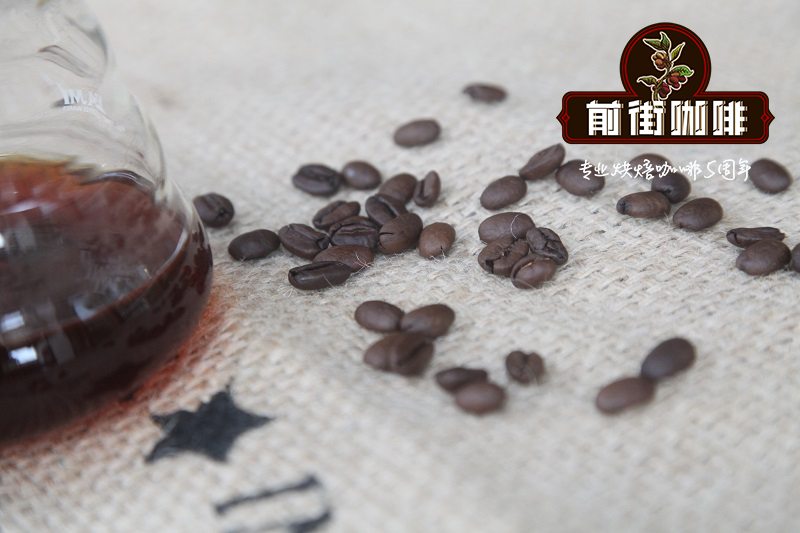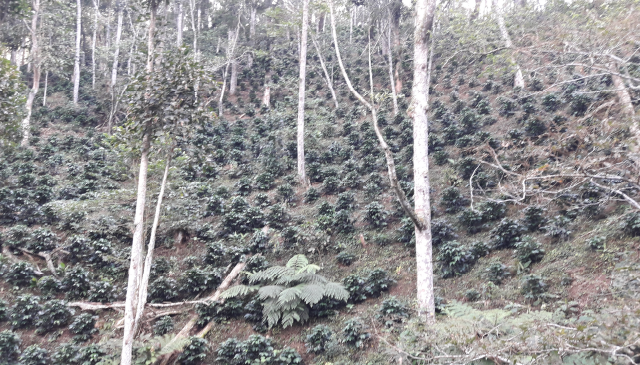Flavor characteristics of Mexican Coffee | three largest Mexican Coffee producing areas | Ninth largest Coffee exporter

In small mountain farms run mostly by indigenous producers, you'll find an often overlooked gem thriving: Mexican coffee.
When people list famous coffee producing areas, Mexico is often overlooked. However, it has a lot to offer: a unique fruity flavor, positive social and environmental impact, and a rich coffee production heritage.
How much coffee does Mexico produce?
Coffee is grown in 16 Mexican states, but you'll find most of the country's 711,000 hectares (as of 2018) in the south.
Coffee first entered Mexico in the late 18th century, when it was grown on farms owned by Europeans, mainly local Mexican laborers. A revolution at the beginning of the 20th century set in motion a process of changing the status quo through agrarian reform.
Mexican farms today are very different from the big plantations of yesteryear: the most recent agricultural census counted 515,000 producers, 85 percent of whom were native Mexicans, and 95 percent of them cultivated less than three hectares. Indigenous and smallholder producers are the most vulnerable group in the coffee industry as a whole-however, the Government of Mexico is working with the National Institute of Indigenous Peoples (INPI) to support them.
Most coffee production in the country is organized through cooperatives. Another little-known fact is that Mexico is one of the world's largest exporters of certified organic coffee, according to the Ministry of Agriculture and Rural Development (SADER), with up to 8 percent of producers growing certified organic coffee. These facts are relevant, but to understand why, you have to go back nearly 40 years.
In 1973, recognizing coffee's potential to help rural development, the Mexican government established the National Coffee Institute. A decade later, coffee became Mexico's most valuable export crop, accounting for 35 percent of Mexico's total agricultural output by the mid-1980s. By 1990, coffee production peaked at 440,000 tons.
However, the collapse of the International Coffee Agreement removed the floor on coffee prices, and eventually, INMECAFE closed. Instead, the Ross Cooperative supports not only indigenous Mexican producers but also encourages organic coffee production.
Most recently, Mexico exported 2.6 million bags (60 kg) in 2018/19. While this is less than 1 percent of global coffee exports, it still makes the country the ninth-largest coffee exporter in the world.
Typical Mexican coffee.
Mexican coffee is light in alcohol, mild in taste and subtle in flavor. They have the potential to stand out: Six coffees broke the 90-point threshold at the 2019 Cup of Excellence. Cruz Jose Arguello Miceli's Rose Summer won the race with an impressive 93.07 points (sold at $35.40/lb). The judges noted that the Chiapas-grown coffee had jasmine, bergamot, lemongrass and vanilla flavours and overall was very sweet with a creamy texture.
Mexico mainly cultivates shade-grown Arabica coffee, while Robusta coffee accounts for only 3-4% of the country's production. Thirty-five percent of Mexico's coffee is grown at 900 miles per hour. In Mexico's relatively cold climate, it is suitable for drinking high-quality coffee.
Edy Hidalgo Espinosa says: "Coffee is processed the same way [all over the country]." Espinosa is the pecan and sustainability coordinator for raw bean supplier Caravela Coffee in Mexico. "In Mexico, 90 percent of coffee is washed, and the remaining 10 percent is honey-treated coffee."
However, although processing methods do not vary significantly between regions, you will find significant differences in the sensory characteristics of coffee and the way producers grow it.

Mexico's three largest coffee producing regions
Chiapas, Oaxaca, and Veracruz: Each coffee section prides itself on its unique coffee specialities-though it's not just about how you taste in your cup. "What's unique about these three coffee producing states is how technically focused the farms are," Eddie said.
Veracruz
Caressing the Gulf of Mexico is the narrow state of Veracruz. It can proudly say that it was the first Mexican state to grow coffee trees, dating back to the 18th century.
It grows in inland mountains at altitudes of 1100 - 1600 m. According to Edy, Veracruz's best coffee has "reddish fruit, blueberry, caramel, panella flavors, moderate acidity, juicy, sweet and sour aftertaste."
Veracruz is the most technologically advanced of the three states, with more disease-resistant varieties and controlled sowing, he said. He told me that some producers would take care to distribute trees evenly to one tree per meter and no more than 5000 trees per hectare.
State of Chiapas
Located on the border with Guatemala, you'll find the best coffee yields in the state between 1300 and 1700 m.a.s.l. Chiapas is also Mexico's highest coffee producer, accounting for 40% of the country's total production.
Many indigenous Mexicans call Chiapas home, but it is also the poorest state in the country, with a GDP per capita of $7249 in 2016.
Chiapas is distinguished from Veracruz by its geographical location and terroir. "Coffee farms in Chiapas and Veracruz have similarities in growing techniques and varieties," Eddie said. Still, he told me, you'll taste chocolate, bitterness, nutty, citrus and lemon, and a rounded, long-lasting body.
Oaxaca
Oaxaca fits neatly into the bottom of Veracruz and the top of Chiapas like a jigsaw puzzle, with the Pacific Ocean to its west. Its coffee farms typically range between 900 and 1650 miles per hour.
Although it is one of the most technologically backward of Mexico's major coffee-growing regions, Edy told me that Oaxaca coffee is not only different, but in high demand. They tend to be sweet caramel color tones, yellow fruit flavors, orange acidity, creamy body, and floral hints.
Many producers here eschew modernization in favor of traditional farming methods. You'll find 80-year-old farms still functioning like they did in the 1940s, and Edy estimates that 70 percent of the varieties are traditional to the area.
Important Notice :
前街咖啡 FrontStreet Coffee has moved to new addredd:
FrontStreet Coffee Address: 315,Donghua East Road,GuangZhou
Tel:020 38364473
- Prev

Introduction to coffee in Nepal | Coffee producing areas you don't know | small coffee producing areas
It is difficult to associate Nepal with coffee, but due to improved planting and processing methods, Nepal has the potential to produce better products in the next few years. Availability can be improved through better coordination between distributors and the supply chain, but Nepalese coffee is still scarce in North America. According to data from NPCA (Nepal Coffee producers Association), Nepal in 2015
- Next

Do you know there is coffee in Laos? Laos Coffee introduction |
The main coffee growing area in Laos is the high-altitude Boravan Plateau, where there is volcanic red soil, where coffee plants thrive. Coffee plant varieties include Arabica coffee, Robusta coffee and Liberika coffee. The French first introduced coffee plants to the region in the 1920s, and the French designated its fertile soil plateau as the main coffee growing area.
Related
- Does Rose Summer choose Blue, Green or Red? Detailed explanation of Rose Summer Coffee plots and Classification in Panamanian Jade Manor
- What is the difference between the origin, producing area, processing plant, cooperative and manor of coffee beans?
- How fine does the espresso powder fit? how to grind the espresso?
- Sca coffee roasting degree color card coffee roasting degree 8 roasting color values what do you mean?
- The practice of lattes: how to make lattes at home
- Introduction to Indonesian Fine Coffee beans-- Java Coffee producing area of Indonesian Arabica Coffee
- How much will the flavor of light and medium roasted rose summer be expressed? What baking level is rose summer suitable for?
- Introduction to the characteristics of washing, sun-drying or wet-planing coffee commonly used in Mantenin, Indonesia
- Price characteristics of Arabica Coffee Bean Starbucks introduction to Manning Coffee Bean Taste producing area Variety Manor
- What is the authentic Yega flavor? What are the flavor characteristics of the really excellent Yejasuffi coffee beans?

